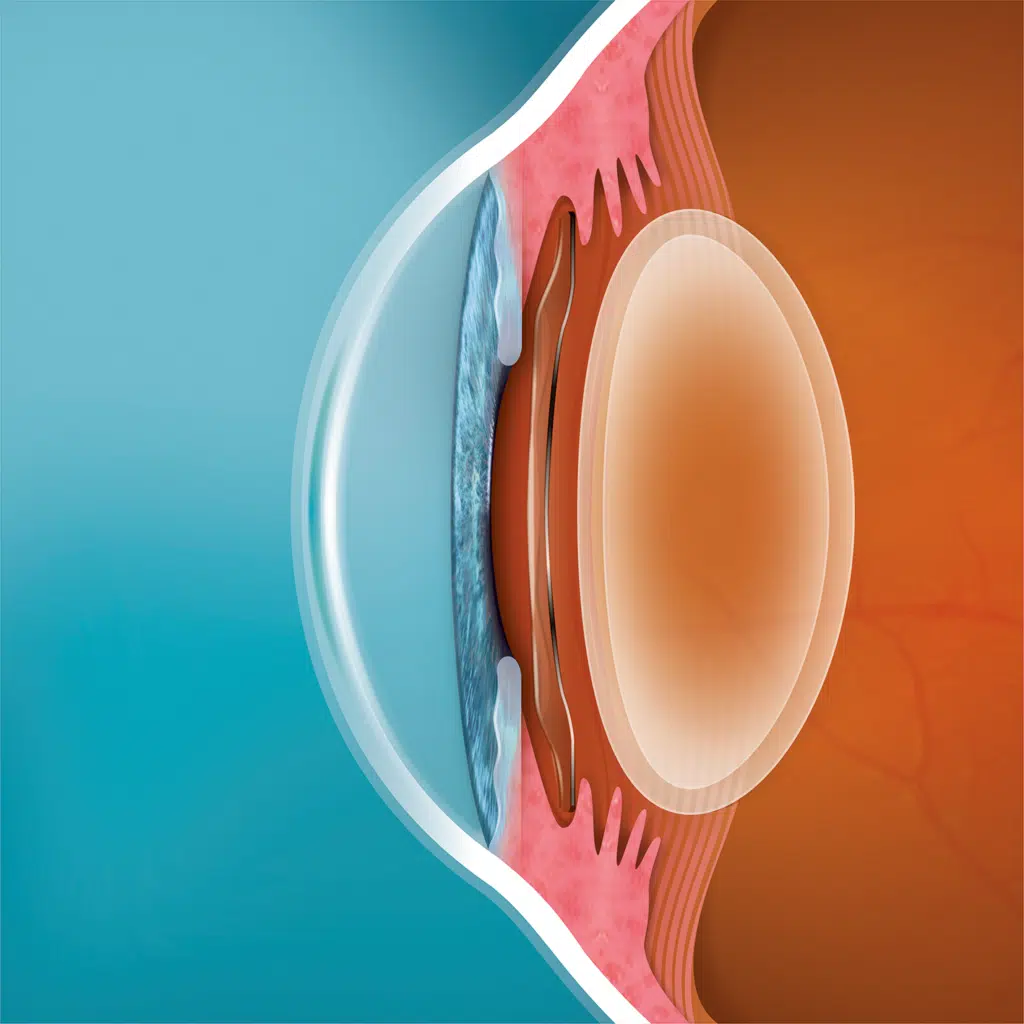An FDA-approved, reversible alternative to LASIK
EVO ICL, also called an Implantable Collamer® Lens, is a refractive implant to correct common vision issues like myopia (nearsightedness) with or without astigmatism. Unlike some other vision correction options, the EVO ICL is an additive technology that corrects vision without the removal of any corneal tissue. The EVO ICL is meant to reduce or eliminate the need for glasses and contacts and unlike most permanent refractive solutions, EVO ICL is removable by your doctor, for added peace of mind.
Berkeley Eye Center is proud to offer a variety of state-of-the-art vision correction treatments. In addition to LASIK, they specialize in the implantation of the EVO Implantable Collamer lens. (ICLs). Berkeley Eye Center has helped ICL patients achieve excellent vision through this procedure. Their reputation as a team of highly talented, experienced ICL surgeons attracts patients throughout Texas including Katy, Kingwood, The Woodlands, Corpus Christi and the greater Houston metroplex.
What is the EVO ICL?
EVO ICL is made of biocompatible Collamer material that works in harmony with your eye. Your eye doctor will create a small opening in your cornea that will be used to insert and position the EVO ICL between the iris and the natural lens. For most patients, the procedure is virtually painless with numbing drops and it typically takes less than 20 – 30 minutes. Patients typically experience improved vision right away and a quick recovery time. The EVO ICL is implanted in more than 2,000,000 eyes worldwide, including active military personnel.
EVO ICL Explained (With Subtitles)
Benefits of ICL
- Sharp & clear vision.
- No dry eye syndrome.
- Great option for people with thin corneas.
- Protection from UV rays.
- Quick outpatient procedure.

Who is a candidate for ICL?
EVO ICL is well-suited for a wide variety of people. Ideal candidates for EVO ICL are aged 21 to 45 with nearsightedness with or without astigmatism and have maintained a stable prescription for at least one year. If you are seeking a solution to decrease or eliminate the cost and frustration of traditional contacts or glasses, EVO ICL may be your answer. Contact us to discuss if EVO ICL is right for you.

Our goal is to offer you the procedure
that will be the best option for you.
How do I know if I’m a candidate?
The typical ICL candidate learns about the procedure and their eligibility when they come in for a free LASIK consultation and learn that they are not a candidate for LASIK. If ICL eye surgery is a better alternative for you, then information on the ICL will be presented to you at that time. Our goal at Berkeley Eye Center is to offer you the procedure that will be the best option for your particular age, prescription, medical condition and the visual outcome you desire.
The vast majority of our patients qualify for LASIK, PRK or the EVO ICL procedure. At your free consultation, we will discuss how each procedure relates to your specific visual condition and your personal goals. It is an exciting time in refractive surgery with new options becoming available every day.
The Procedure

On the day of the procedure, a topical anesthetic will be administered to your eyes and you may be given a sedative. A gel-like substance will be placed in your eye to protect the eye during the procedure. The surgeon will create a micro-opening in the cornea and insert a lens customized to your individual prescription into your eye, placing it between the iris and the eye’s natural lens. The lens gently unfolds in your eye, and vision improvement is immediate. ICL eye surgery itself takes only about 15 minutes.
Your eyes will be covered with a clear patch or protective shield, and you will be given a prescription for drops or medication. You will not be able to drive immediately after the procedure, so you will need a responsible party to drive you home.
EVO ICL Cost
The EVO ICL cost can be higher than LASIK surgery due to the cost of the lens implant and being performed in a surgery center. Berkeley Eye Center offers financing options (with approved credit) to make the ICL cost less daunting for patients. Flex Spending Accounts or Health Savings Accounts can also be used to pay for the procedure.
